How To Save Energy

With energy prices on the rise again, I decided to install solar panels and battery storage as part of my smart home solar energy project but, this led to me researching this technology and looking at all the other ways we could save energy, to reduce our bills and maximise our return on investment.
I joined a few social media groups on these subjects and realised that many people don't really understand the technology and all that it can do for them. Many are also not aware of the simple steps that can be taken to save energy in your home. This article aims to address these issues and show you some real things that can be done to save energy.
This article is split into the following sections:
- Terminology
- Understanding Your Energy Usage
- Insulation
- Solar Panels
- Battery Storage
- Reducing Your Energy Usage
- Using Energy Wisely
- On-Going Monitoring
Terminology
Power
All devices and appliances in your home have a power rating in Watts (W) or kilowatts (kW). 1000W = 1kW. An energy efficient LED light bulb may typically be rated from about 3W and up to to 9W. A typical kettle can use as much as 3000W (3kW) but there are also lower powered kettles. Some appliances such as washing machines and dishwashers use varying amounts of power as they complete their cycle. Heating water tends to use lots of power, running a motor or pump less so. With appliances that have a varied power usage, you have to use a plug-in energy monitor to measure how the power varies and to measure how much energy it uses during its cycle.
When you have solar panels or batteries to store energy, the peak power usage (the highest power used by a device) is important because it might be more than your solar panels are generating or more than your battery can provide. This is even more likely if several appliances are being used at the same time, e.g. your washing machine and your oven.
Energy
Energy is a measure of how much power a device is using over a defined period of time: Energy = Power × Time
Energy usage is typically measured in kWh, rather than Wh (to keep the numbers more manageable). A kettle using 3kW (3000W) of power for an hour will use 3kWh. If that kettle is only on for 3 mins, it will use 3 × 3 / 60 = 0.15kWh of energy. An LED light bulb that uses 5W (0.005kW) and is on for 24 hours will use 24 × 0.005 = 0.12kWh. This means using high power devices for long periods of time are not good when it comes to energy saving.
To put energy use in perspective, it is worth understanding what 1kWh represents:
- 1kWh is about what a 55" LED TV would use watching TV for 12 hours.
- 1kWh would allow you to boil a 3kW kettle about 7 times (assuming it took about 3 minutes each time to boil the water).
- 1kWh would allow our CUPRA Born to drive about 4 miles.
- 1kWh is about what a slow cooker uses to cook a large meal for 4, using it on the low setting for 8 hours.
Importing
When you are using power from the power network, you are 'importing' power into your home. This is what all homes do at some point, even those with solar panels and battery storage. The only exception is homes that are "off grid" and not connected to the UK power network.
Your electricity meter will measure how much electrical energy your home is importing and your will be charged based on the amount of energy used. Most people are on a 'fixed price' tariff, which means the cost of electricity is the same at any time of the day but, most energy providers also have variable tariffs that provide cheaper electricity when there is less demand for it. A good example is the Octopus Go tariff, which allows people with an electric vehicle (EV) to charge it between 00:30 and 04:30 at a much cheaper rate.
If you have battery storage, you could charge it over night using a cheap rate tariff and then use that stored electricity in your home during the rest of the day. From an energy providers perspective, you are 'time shifting' your energy usage. This assumes two things though:
- You have enough battery storage capacity to store all the electricity you will need during the rest of the day.
- You can charge your battery fast enough in the time period (typically 4 hours) that this cheap rate is available.
Exporting
If you have solar panels or battery storage, then you can export electricity back into the power network and get paid for it. In order to do this though, you have to meet certain conditions:
- Have an MCS certified installation (or equivalent).
- Have approval from your DNO to export electricity.
Phantom Loads
A 'phantom load' is an appliance or device that is left plugged in and is using power, even when it isn't being used. The most common types of phantom loads are things like mobile phone chargers. These will still use power, even with no phone connected.
There can be many phantom loads in a typical UK home, many using much more energy than this. A plug-in energy monitor can measure and quantify this wasted energy for you.
Some appliances use less power in standby mode than you might think. Our 55" SUHD Samsung TV uses just 0.3W in standby mode. The only way to know for sure, is by using a plug-in energy monitor. Devices like our TV are often best left switched on, so that they can perform software updates when required and are also more conveniently controlled using the remote control.

Some devices straddle the line between being a phantom load and being in use. Our BT YouView set-top box is one example. It needs to be left powered on, so that it can record programmes scheduled for recording but, whilst sitting there in stand-by mode it is using over 9W. Devices like this can often be configured to use less power in standby, at the expense of convenience of use. When set to use as little power as possible, it will take much longer to start up and be usable.
Internet hubs and routers are not really phantom loads. They generally need to be left on all the time, so that they can perform software updates and provide an Internet connection to people and other devices in your home. If you switch them off each night, your ISP might assume there is a problem with your Internet connection and start to do things, like slowing your connection speed to try and fix the problem.
Distribution Network Operator
Your Distribution Network Operator (DNO) is the company that owns and operates the power lines and infrastructure that connect the national grid network to your property. You don't get to choose who your DNO is, it simply depends on where you live. You don't normally have any form of contact with your DNO. You can find out who your DNO is by completing this simple form (it just requires your postcode). In my case, my electricity network operator is UK Power Networks and my gas network operator is Cadent.
Energy Provider
Your energy provider (or supplier) is the company you have a contract with to supply you with electricity and/or gas. You usually have a choice of energy providers and nearly all of them charge you based on how much electricity or gas you use but, they will also add a daily 'standing charge', which can be significant. You don't always choose an energy provider on price alone. Customer service is also an important factor for many.
Understanding Your Energy Usage
The best way to understand how much energy you use is to look at the billing data provided by your energy provider. Some are better at this than others. Many now provide a smartphone app or a website where you can look at you current and historical usage.
Looking at your meter reading is the simplest way to understand your energy usage. At the very minimum, you should be writing down your meter readings at the start of each month. This will give you a good indication of how your energy usage varies through the year and it will also tell you what your annual usage is. Your energy provider should also be providing bills that show your annual energy usage. As an example, the figures for our 4-bedroom, detached house built in 1995, with 4 adults in it are:
- In 2020 our annual usage was: Electricity 5,313kWh and Gas 19,066kWh. In 2020 we paid £790.43 for electricity and £480.85 for gas.
- In 2021 our annual usage was: Electricity 5,117kWh and Gas 16,962kWh. In 2021 we paid £955.86 for electricity and £581.57 for gas.
Baseline Energy Usage
Your baseline energy usage is the amount of energy your home uses when everyone has gone to bed and all the usual devices and appliances are switched off. This will include:
- Appliances like fridges and freezers and these will ensure it varies slightly, as pumps and compressors are used.
- Telephone answering machine
- Networking equipment, such as routes, Wi-Fi access points, switches, etc.
- Computing equipment left on (servers, NAS, etc.) and in stand-by mode (e.g. monitors)
- Entertainment devices such as amplifiers, sub-woofers, TVs, set-top boxes, etc.
- Central heating controls, pumps, etc.
- Mains powered smoke alarms
- Bathroom extractor fans
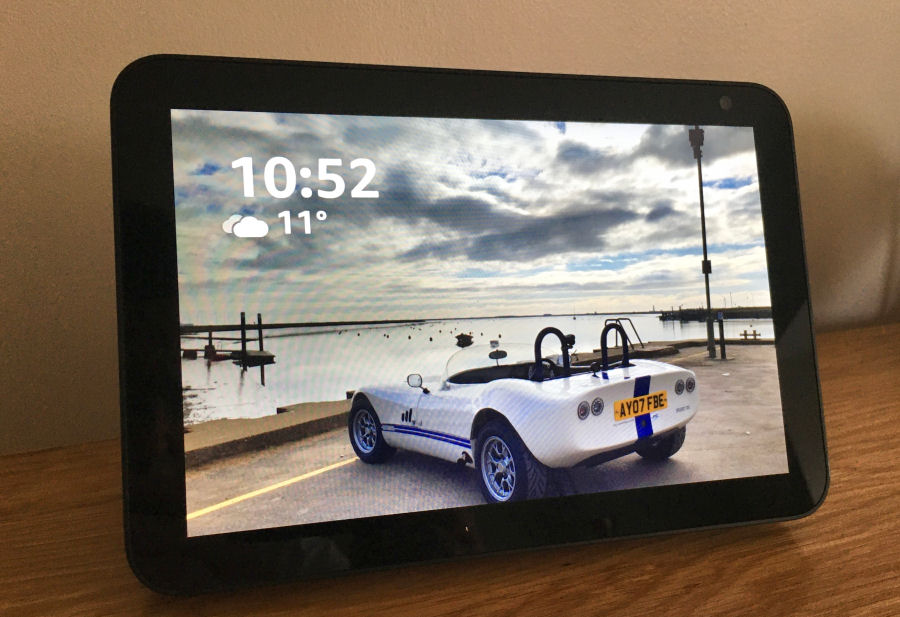
There may be devices in your home that will increase your baseline energy usage above that expected. Devices like my Amazon Echo Show 8 use 6W all the time. That's 0.144kWh per day, 4.32kWh per month or nearly 52kWh per year. And we have 4 smart speakers around our home.
Plug-In Energy Monitor

To understand how much energy a device or appliance is using, you really need to use a plug-in energy monitor. This will tell you how much energy (in kWh) the device has used over a period of time to to complete its cycle. It will also tell you the maximum power used (in kW) and this is important to know with solar panels, as it will determine if your system can power it using solar and battery power alone, or will have to import energy from the power network.
Smart Meter

You can read my research on smart meters and you will see that I'm not a fan of them but, in order to progress our smart home solar energy project I had to get one installed. It is the only way we can get paid for our exported energy. You can also read my smart meter review.
A smart meter is useful for getting an instant view of your energy usage, your daily energy usage and for granular data collection of your energy usage (typically every 30 minutes). This can help a lot in understanding how you are using energy.
Insulation
Insulating your home properly is one of the best investments you can ever make. Insulation covers more than just the loft and walls though. It is important that you have good quality windows and doors that don't leak.

One way to check the quality of insulation used in your home is using a thermal camera to do a thermal survey.
Solar Panels
Installing solar panels is going to help reduce your electricity usage, especially in the summer months. The payback period is usually less than 10 years but, with a well thought out energy strategy this could be reduced to about 5 years. It very much depends on your specific installation environment and the price paid though.
One way to save more with solar panels, is to use the 'spare' electricity generated to reduce your gas usage. A very common example is using this solar power to pre-heat a hot water tank using an immersion heater. In the summer months we will reduce the amount of gas used to heat our hot water by a huge amount.
Distribution Network Operator Approval
To be allowed to connect your home solar panels or battery storage to the UK power network, you will need approval from your Distribution Network Operator (DNO). There are basically two types of DNO approval for consumer solar installations:
- G98 is a simple connection procedure for Fully Type Tested systems under 16A per phase, systems are installed on an install and inform basis. If the solar installation to be connected is installed in compliance with G98, the DNO can be notified of the installation up to 28 days after the commissioning date. This is usually used with inverter rated up to 3.68kW.
- If you are installing a larger scale solar system (greater than 16A per phase or an inverter than can deliver more than 3.68kW), you will need to apply for G99 DNO approval prior to installation. This is because the DNO needs to determine whether your local power network infrastructure can handle the extra load. The process of the DNO reviewing your application can take up to 12 weeks.
How Big?
The most common question in the social media groups focussed on solar energy is what size system do I need? In practice, most people's installation is limited by their budget or the roof space available. Your location, the direction your roof faces and inclination of your roof is important. An orientation calculator will tell you what you can expect for your specific installation.
If neither of these things is a limiting factor, then the amount of energy you currently consume (or plan to consume in the future) should help decide how big you system should be. As an example, our historical energy bills showed that we used about 5000kWh of electricity each year, so we would need a system that generated at least this in a typical year. Solar panels produce a lot less energy in the colder, darker winter months, so it is very unlikely that you will be able to generage enough to cover your usage. This means you will have to import some energy, unless you have a other ways to generate it, such as a wind turbine.
I actually asked for a system that fill the south facing roof of our home because my budget was not going to be the limiting factor in our case. The system being installed is 17 × 390W panels, giving a peak output of 6.63kW. The installation company suggested that this would result in us generating about 6890kWh per year and the European Union PVGIS service aligns with this estimate.
Unless you plan to be completely off-grid (not connected to the UK power network), then you will need an inverter to export power back into the network. This may be one invertor, or several, or even many microinverters (usually one per solar panel). These will have a power rating and if you are likely to send more than 3.68kW back into the network, you will need G99 approval from your DNO. This can take a long time and will be needed before the installation is started.
Solar panels can get dirty and dirty panels produce noticably less power. The roof pitch on most houses means that the rain does a pretty good job of cleaning solar panels. A shallow roof pitch will mean that the solar panels need to be cleaned regularly though. Panels should be cleaned on cooler days, to avoid the thermal shock from cool water damaging them.
Battery Storage
Battery storage complements solar panels really well. It basically means you can use much more of the energy they generate. Battery storage is relatively expensive but, if used wisely it can provide a good return on investment.
There are six reasons why you might want to add battery storage to your home:
- To fill in the gaps in energy generation during the day, where your solar panels are producing less than you are using. This might be because of temporary cloud cover or simply that you have several appliances on at once.
- To store excess solar energy during the day, so that you can run your home at night using the stored at night. This is quite common during the summer months.
- To store excess energy during the day, so that you can export it at peak periods, to generate extra income. This assumes you are on a tariff that makes this worthwhile (e.g. Octopus Agile Export).
- To store energy during the night (using a cheap night rate tariff), so that you can run your home during those winter days where there is very little solar energy being generated.
- To store cheap energy during the night (using a cheap night rate tariff), so that you can export it at peak periods, to generate extra income. This assumes you are on a tariff that makes this worthwhile.
- To keep your home running in the event of a power cut.
There a number of key questions to answer when specifying and installing battery storage:
- Will your battery store enough energy to keep your home running through the night/day during both the summer and winter? To answer this question, you need to know how much energy you typically use throughout the day and night, both in the summer and winter.
- Can you charge the battery fast enough using cheap rate electricity during a winters night, to keep your home running during a winters day? All battery storage has a maximum rate at which it can be charged and the cheap rate tariffs typically only provide about 4 hours of cheap rate electricity.
- Can your battery supply enough power to keep all the appliances running in your home that your require? All batteries have a maximum power rating or this may be a limitation of the inverter connected to it.
Vehicle To Home (V2H) / Vehicle To Grid (V2G)
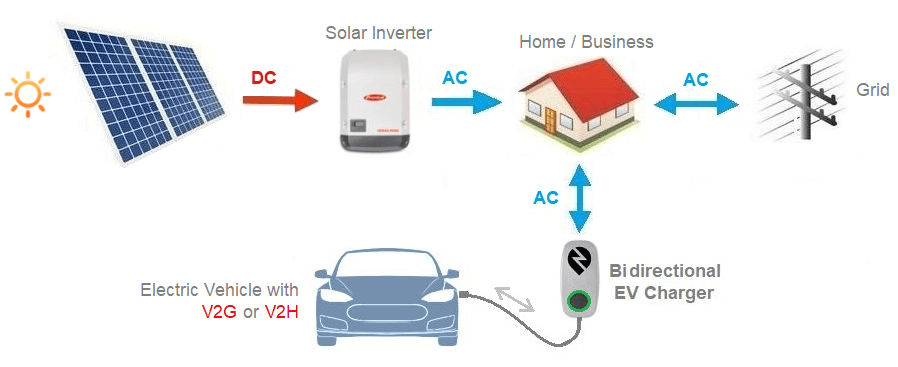
EVs with bidirectional (two-way) charging capability can be used to power a home, feed energy back into the electricity grid and provide backup power in the event of network power outage. An EV is a large battery on wheels, so bidirectional chargers enable a vehicle to store cheap off-peak electricity or solar energy to reduce household electricity costs.
The use of this technology is currently limited to a few makes of EV and EV chargers. Progress is being made to widen the support for this though. This approach only works if it fits with your EV usage pattern.
This article is worth a read if you need more technical details: Bidirectional chargers explained - V2G vs V2H vs V2L by Clean Energy Reviews (03/06/2022)
Reducing Your Energy Usage
Lighting
Quite a lot of energy can be saved by changing your bulbs. And I don't just mean replacing halogen bulbs and old filament bulbs with LED equivalents. LED bulbs have been around for a long time now and the technology has advanced over the years. Sometimes you can save energy by using lower power LED bulbs or simply using better LED bulbs. Our hall light is on a smart schedule and I reduced the power significantly by putting in new LED bulbs, which were actually brighter than the ones being replaced.
More than 80% of the lighting in my contextual smart home is fully automated and a zero touch user experience. It is switched on and off intelligent and just works around us. These lights cannot be left on by accident.
Fridges & Freezers

Modern fridges and freezers are much more efficient than older appliances. All new appliances come with an energy rating too. The cost of replacing your old fridge or freezer might be recouped quite quickly.
If you have a fridge or freezer that has been in place for a few years, it will be well worth cleaning the back of it with a vacuum cleaner. Dust accumulates on the heat exchanger, reducing its efficiency and causing it to use more energy. The location of fridges and freezers is also important. They work much better when not enclosed, so that air can freely circulate through the heat exchanger. They also use less energy when installed in a cooler location, such as a integrated garage or utility room but, do check the manual to ensure that the location stays above the minimum operating temperature. Installing them next to something hot (e.g. an oven) is not a good idea.
We have two fridges, the second one being a drinks fridge with a glass door. It isn't very efficient but it is only ever used for entertaining and is switched off for most of the year.
Air Fryer
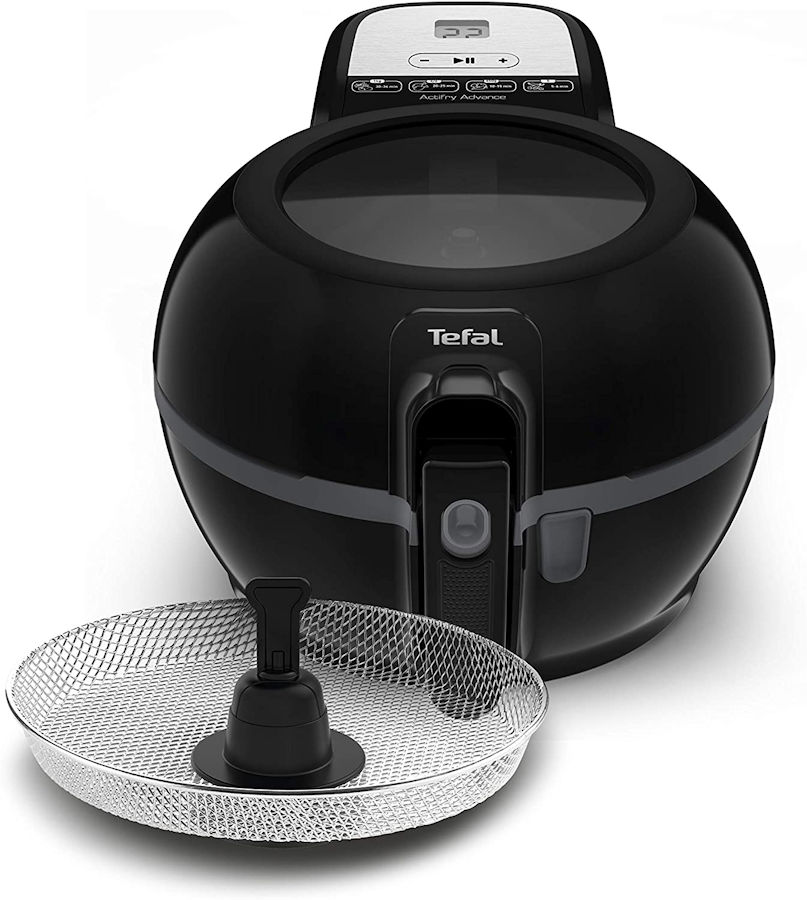
An air fryer uses much less energy than an oven to cook food. It is using electricity though, which is typically more expensive per kWh than gas.
Microwave

A microwave is even more energy efficient than using an air fryer and can also reduce the need to wash dishes, saving even more energy. It is also using electricity though, which is typically more expensive per kWh than gas.
Rice Cooker / Steamer
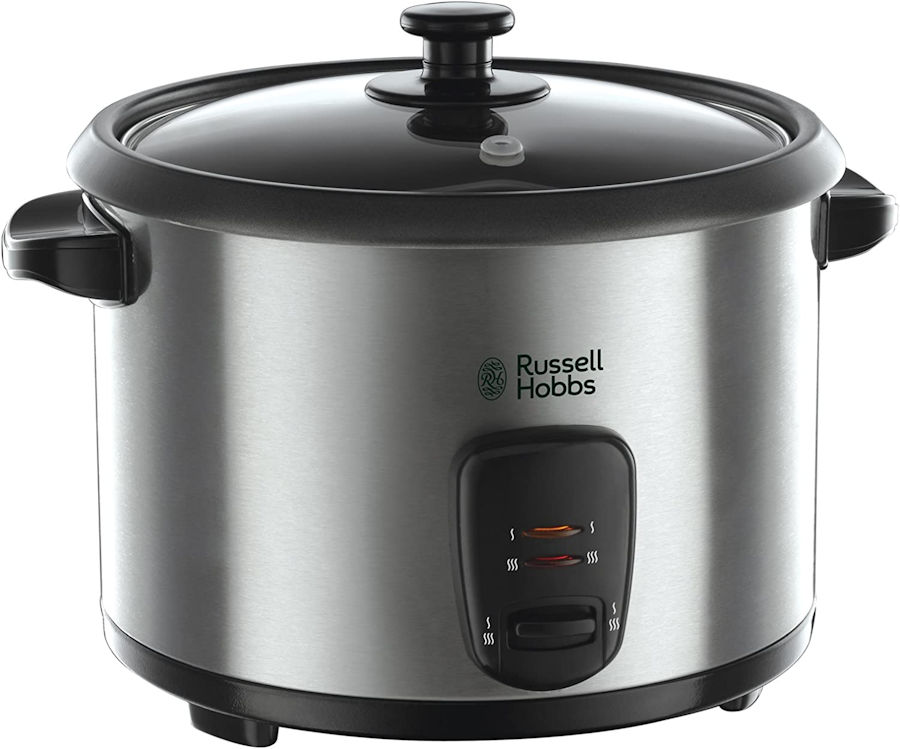
My rice cooker / steamer is also impressively efficient. It uses a peak of about 735W but uses just 0.12kWh to cook rice perfectly for 3 people (0.15kWh for 4).
Filter Coffee Machine
Our filter coffee macchine uses 1.1kW and just 0.07kWh to make coffee for two people.
Tumble Drier

There are tumble dryers available that feature heat pump technology, which use less energy but, they are more expensive and take longer to dry clothes. Our tumble dryer uses a continuous 1.4kW on the medium setting and a continuous 2.6kW on the high setting.
Entertainment
Like most people we have a TV cabinet under our TV, with a number of devices used for entertainment. It is well worth having a look at all these devices to see which are being used regularly and which could be switched off when not in use. Also take look at their configuration to see if they will go into standby mode automatically and the time taken to do this.
We have a 5.1 surround-sound system under our TV, to improve the audio quality. This is based around a Denon AVR-1912 home cinema amplifier and this uses HDMI CEC to switch on and off automatically when any of the devices (TV, YouView STB, Apple TV, Blu-ray player, etc.) are switched on. Whilst it uses just 3W in standby, it uses 60W when switched on, which is quite a lot of energy to simply improve the sound. I've been told that later models have an energy saving setting, to reduce the amount of power used.
The Blu-ray player is probably only used 2 or 3 times a year, so it is left switched off at the socket for the rest of the time.
Gas Boiler
We recently replaced a 25 year-old gas boiler with a new one, which is much more energy efficient. The combination of better efficiency and smarter control has reduced our gas usage by about 30%.

As part of the new boiler installation, we also had 'dumb' thermostatic radiator valves installed on all our radiators. These enable simple control of the temperature in each room and mean the whole central heating system is running more efficiently and also providing a more comfortable living environment. I am currently replacing a few of these with smart thermostatic radiator valves to improve comfort and efficiency even further.
Using Energy Wisely
Using energy wisely will save you even more money as is about changing the way you use things in your home. This could be done simply by changing your behaviour (and that of your family) but it can also be automated, using smart home technology. I have implemented a smart home energy management project to ensure our home uses energy wisely.
Time Shifting
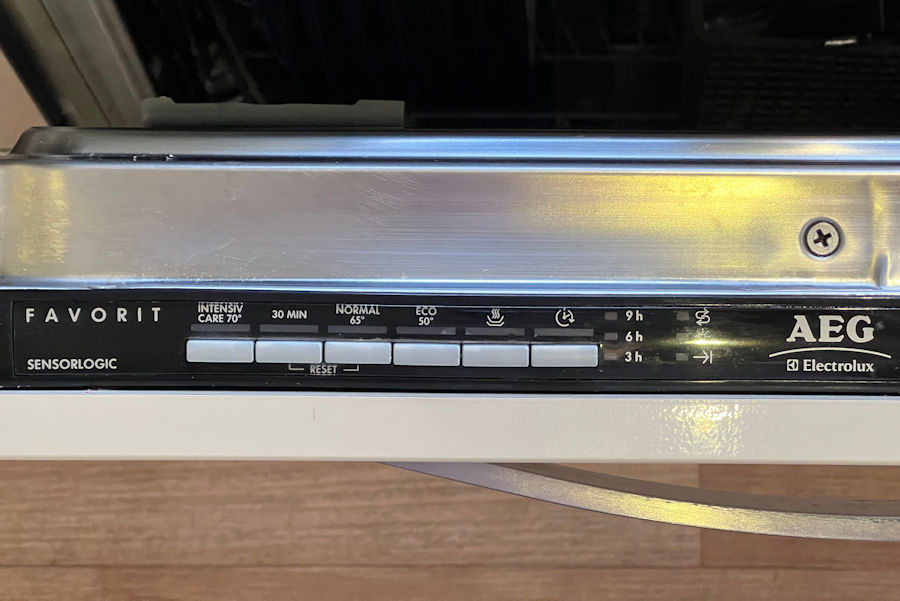
Time shifting your usage of energy, to times when electricity is cheaper, will save you lots of money. Our dishwasher has buttons to delay the start of the washing cycle by 3, 6 or 9 hours. This means that if we put it on at 8pm and use the 6-hour delayed start, it will start at 2am in the morning and complete its cycle before 4:30am, when our cheap rate period ends.
For some people a dishwasher is a luxury item that they simply cannot afford. Washing dishes by hand in a sink will always use less energy and it makes a lot more sense for people that live on their own or couples, who simply use less crockery during the day. We have a cheap electricity rate from 00:30 to 04:30, so we will quite often wash a few dishes by hand, simply to ensure we have enough clean plates, etc. for our evening meal. We can then put the dishwasher on a delay timer, to run when it costs less than a fifth of what it would cost to run it during the day/evening. Our dishwasher uses 1.4kWh and a peak power of 2.3kW on a 'normal' cycle.
Load Spreading
The simplest form of load spreading is simply achieved by not putting appliances on at the same time. By using them one after the other, you reduce the peak load on your solar panels and/or battery storage.
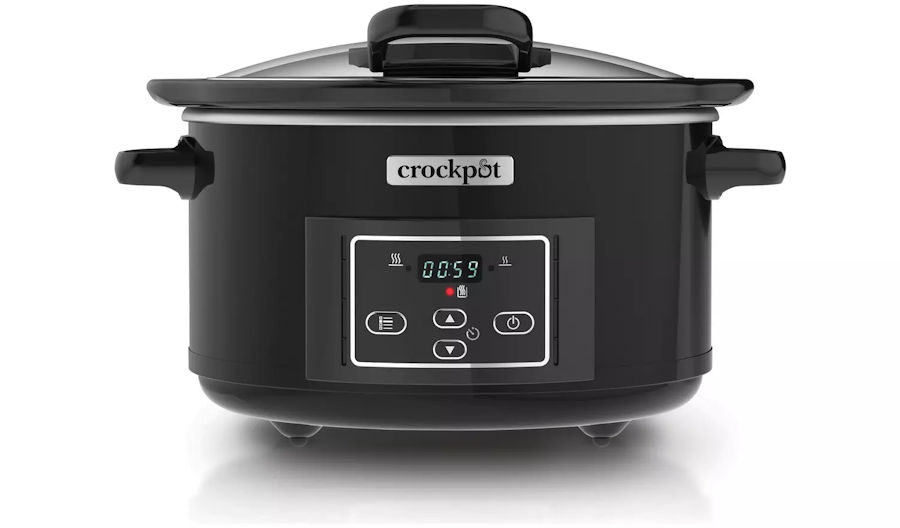
Using a different type of appliance is another way to spread the load. Our Crockpot 4.7L digital slow cooker uses a maximum of 220W, much less than our oven (2.4kW) and it uses this over a longer period of time (4 to 8 hours). It still uses a lot less energy to cook the same meal though, simply by being more efficient. When I cooked a Beef Bourguignon for 5 people, it used 1.2kWh and took 8 hours.

Buying a lower power kettle to save money will not work. To boil a given volume of water takes the same amount of energy, whether you do it quickly or slowly. The only advantage of a low power kettle is that it spreads the load, so that you are less likely to import energy if you are using solar panels to supply the power. If you have battery storage, then it should pick up any deficit and avoid importing energy but, it does depend on your specific installation.
Those expensive taps that supply boiling hot water on demand use more energy than a kettle but, they are very convenient. They also help to spread the load.
Iron

If you have to iron clothes, then you have to iron clothes. One thing to think about though is spreading the load, so that (assuming you have solar panels or battery storage) you are not exceeding the capability of you solar system and then importing energy. Our iron can use as much as 2400W, so we choose our time to iron clothes carefully.
Hot Water
Using less hot water by taking a shower instead of a bath will save you energy. So will having a cooler shower.

A good way to save energy (especially if your hot water is heated by gas), is to use solar panels to pre-heat the hot water tank using your existing immersion heater. There are many devices available to use the 'spare' solar energy generated to achieve this. In the summer months it is possible to avoid using your gas boiler for water heating.
Smart Home
This is a massive subject in its own right and has been the focus of my work for the last 20+ years. A properly smart home can save you a lot of energy and has many other benefits. Some simple examples are the various smart appliances in my contextual smart home. Pretty much all the lighting in my home is controlled intelligently and a zero touch user experience. Lights cannot be left on by accident and will be switched off automatically, when not needed. The primary reason for my smart home is to improve our quality of life but, it also saves us a lot of energy.
Smart Thermostat

A smart thermostat can reduce your energy usage by giving you much more control over how your home is heated and when. It can also work more efficiently than a dumb thermostat. Many also allow multiple zones, making your home more comfortable and efficient. Some also support smart thermostatic radiator valves to give you much greater control, down to room level. This means you can set lower temperatures for things like utility rooms, toilets, unused bedrooms, etc.
In a really smart home, heating and hot water can be controlled intelligently based on occupancy and presence, using different set points, depending on who is at home. It will also handle people going out to work or away on holiday automatically, not only saving you money but also making it really simple and a zero touch user experience. I have a Wiser smart thermostat under intelligent smart home control and your can read my review.
On-Going Monitoring
Smart Meter
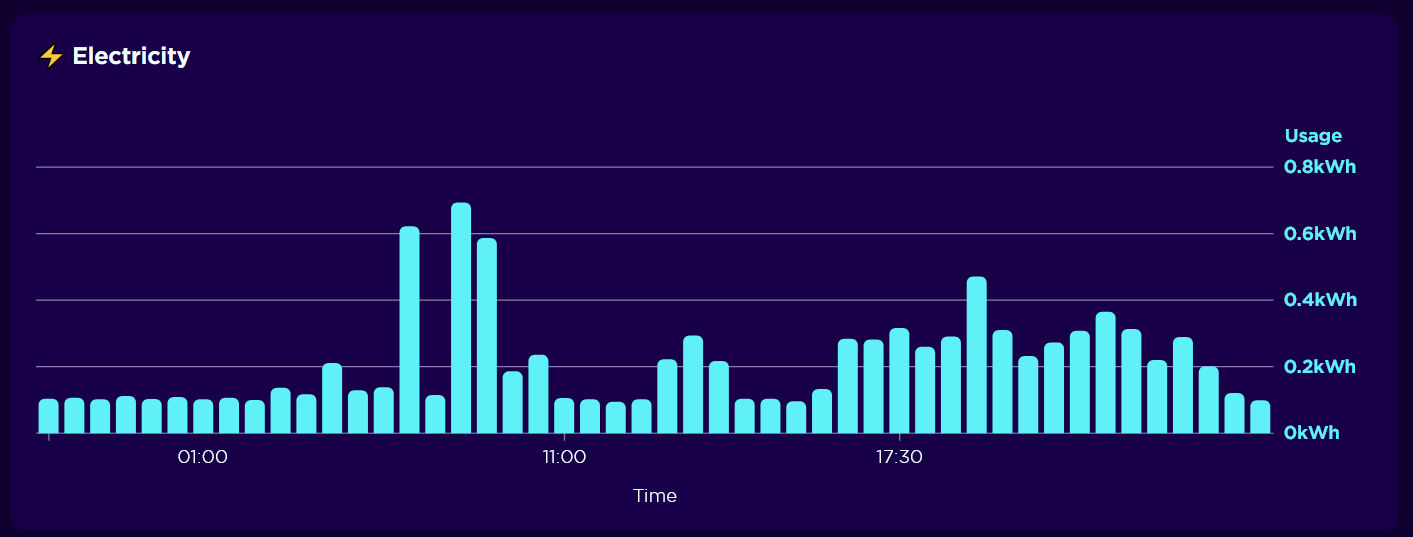
If you have a smart meter a 30-minute daily view like this is possible but, it depends on energy provider. This graph view is from the Octopus Energy website. It can be really useful and show you exactly when and how much power you imported. It can help validate that your solar panels and/or battery storage is working as expected and also be used to spot power hungry devices being used.
Check & Test Your Solar Installation
It amazes me how many people I know that have installed solar panels (and in some cases battery storage too) but, they don't know exactly what they have had installed, how it works, or how to check it is working correctly.
Smartphone Apps
Many solar installations involve equipment that come with apps to monitor them. These can be extremely useful and if you are considering a solar installation, then do ask for this feature. It allows you see how well it is performing and to spot any issues. The data can be extremely useful in diagnosing faults and issues.
If you found this page useful you can buy me a coffee. This helps me maintain this website and add more content.
Further Reading
My Projects
- Smart home solar energy project
- Smart home energy management project
- Smart home energy modelling project
- Tesla Backup Gateway smart home integration project
- Energy data analysis & savings for 2022




